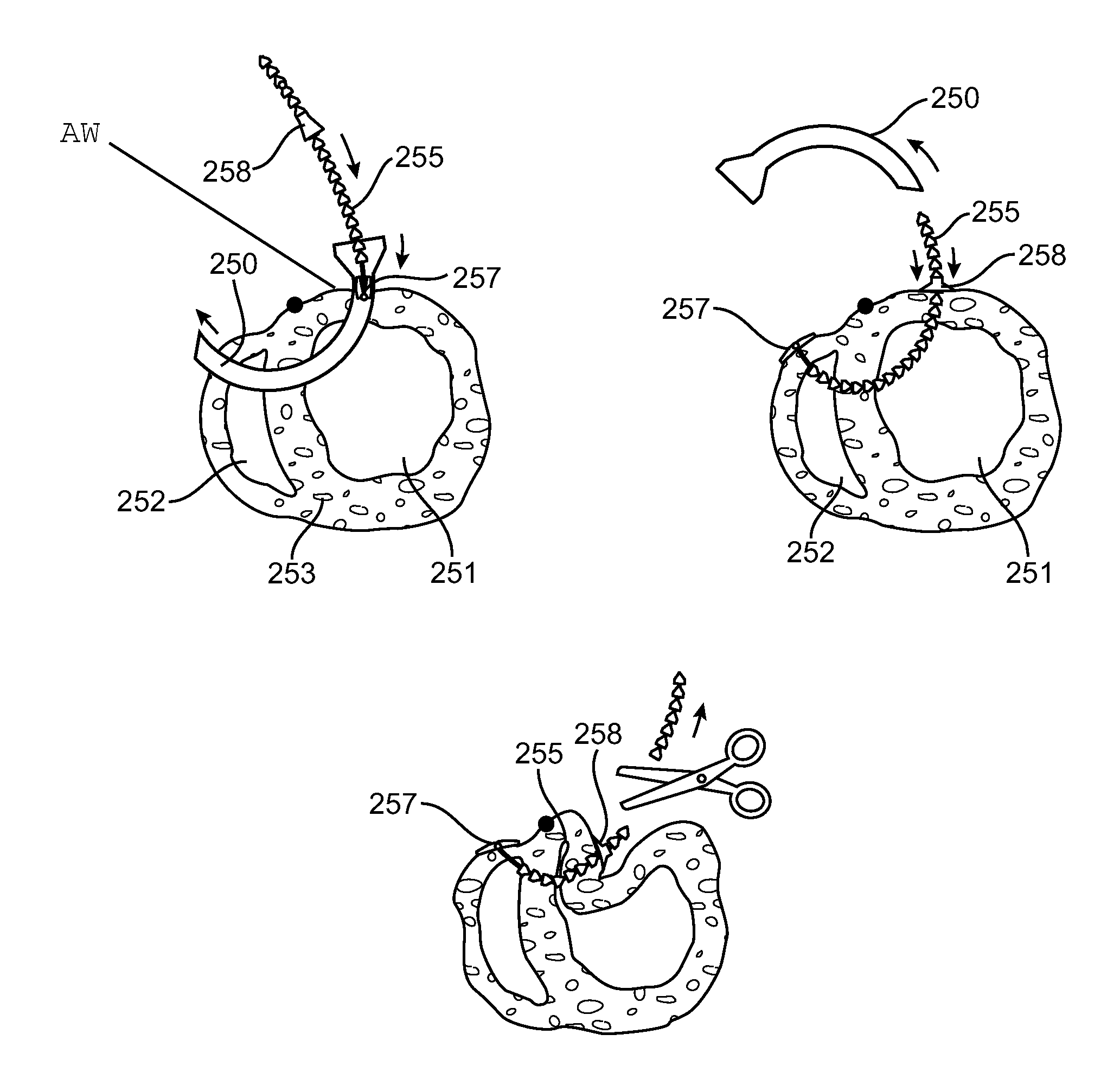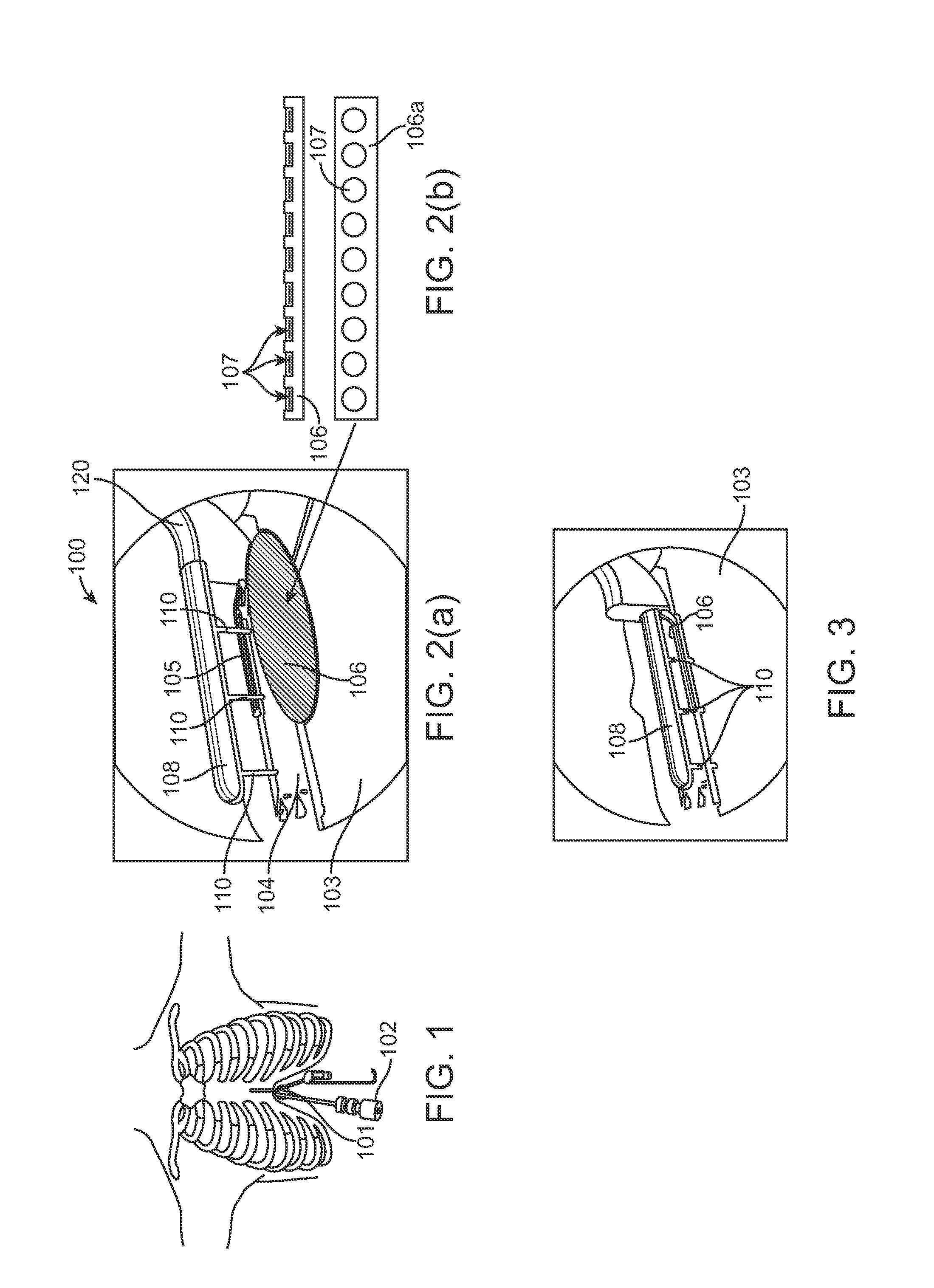Method and device for treating dysfunctional cardiac tissue
a technology of cardiac tissue and resizing ventricle, which is applied in the direction of prosthesis, surgical staples, therapy, etc., can solve the problems of reducing the effectiveness of the heart, the back-up of pressure in the vascular system behind the ventricle, and the extraordinary high cost of advanced medical care for the millions of patients suffering from hf, so as to reduce the trauma of the patient, prolong the delivery of drugs, and the effect of delivering the same amoun
- Summary
- Abstract
- Description
- Claims
- Application Information
AI Technical Summary
Benefits of technology
Problems solved by technology
Method used
Image
Examples
Embodiment Construction
[0032]Although this invention is applicable to numerous and various types of cardiovascular methods, it has been found particularly useful in the field of reducing ventricular volume of the heart. Therefore, without limiting the applicability of the invention to the above, the invention will be described in such environment.
[0033]With reference to FIGS. 1-9, an anchoring system in accordance with one embodiment of the present invention will be described.
[0034]Initially, in FIG. 1, a subxiphoid incision is cut to create an opening 101 to access the ventricles of the heart. Additional access may be performed in the intercostal space for other instruments as well. Then, a double balloon catheter 102 is introduced into the heart through the opening 101 to unload the heart. The balloon catheter 102 provides inflow occlusion to decompress the ventricles, thereby reducing the systolic pressure for aid in reducing the ventricular volume or exclusion of dysfunctional cardiac tissue. The cath...
PUM
 Login to View More
Login to View More Abstract
Description
Claims
Application Information
 Login to View More
Login to View More - R&D
- Intellectual Property
- Life Sciences
- Materials
- Tech Scout
- Unparalleled Data Quality
- Higher Quality Content
- 60% Fewer Hallucinations
Browse by: Latest US Patents, China's latest patents, Technical Efficacy Thesaurus, Application Domain, Technology Topic, Popular Technical Reports.
© 2025 PatSnap. All rights reserved.Legal|Privacy policy|Modern Slavery Act Transparency Statement|Sitemap|About US| Contact US: help@patsnap.com



